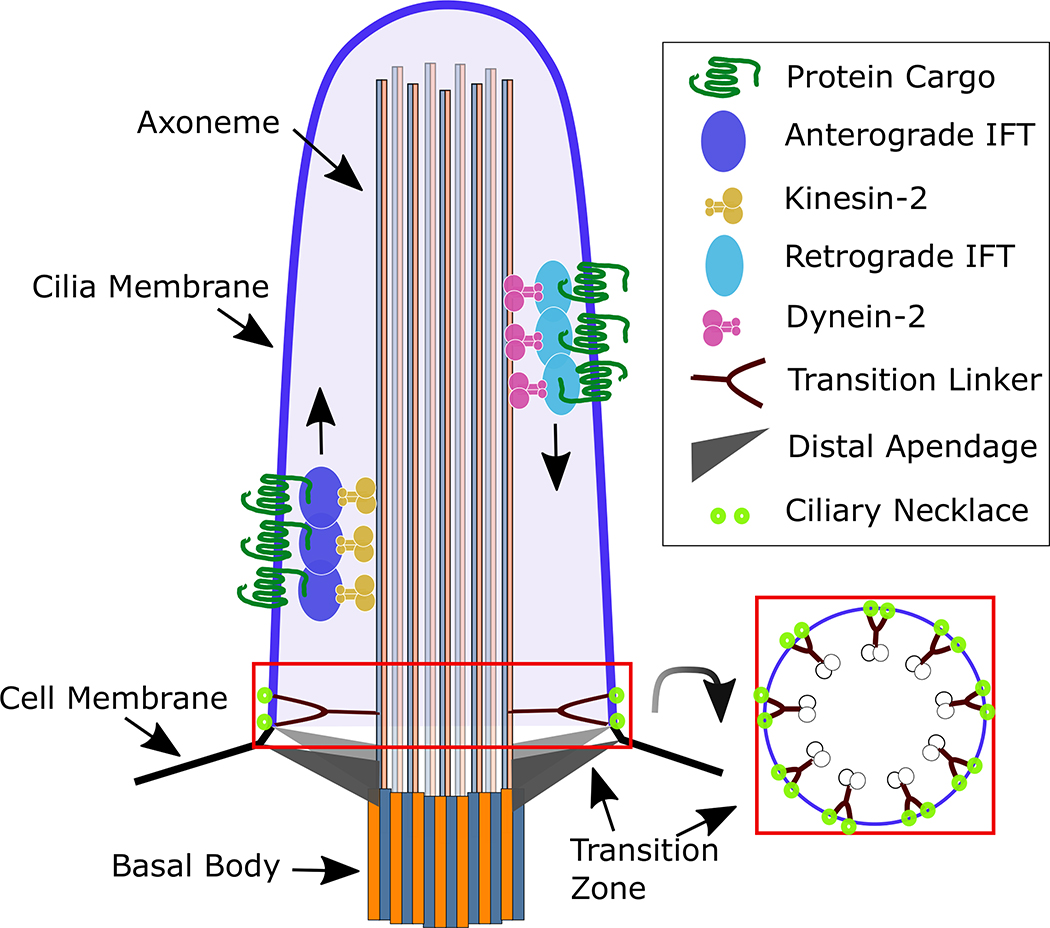Figure 1. Model of Ciliary Structure.
The cilium is a microtubule projection comprised of 9 microtubule doublets that make up the axoneme. The axoneme is anchored to the basal body, which resides in the cell. Trafficking into and out of cilia is regulated by the transition zone at the proximal end of the cilium. The transition zone is comprised of Y-shaped linker proteins, ciliary necklace membrane proteins, and distal and sub-distal appendages. Together, the transition zone acts as a diffusion barrier, preventing the free movement of proteins in to the cilium. Moreover, the transition zone regulates the active transport of proteins into and out of cilia. Finally, the transition zone provides structural support to the basal body and axoneme, anchoring the ciliary skeleton to the plasma membrane. Proteins are transported to the ciliary tip and back via anterograde and retrograde IFT, respectively. The ciliary membrane is contiguous to the cell’s plasma membrane but the ciliary membrane displays a distinct lipid composition being enriched for PI(4)P.

